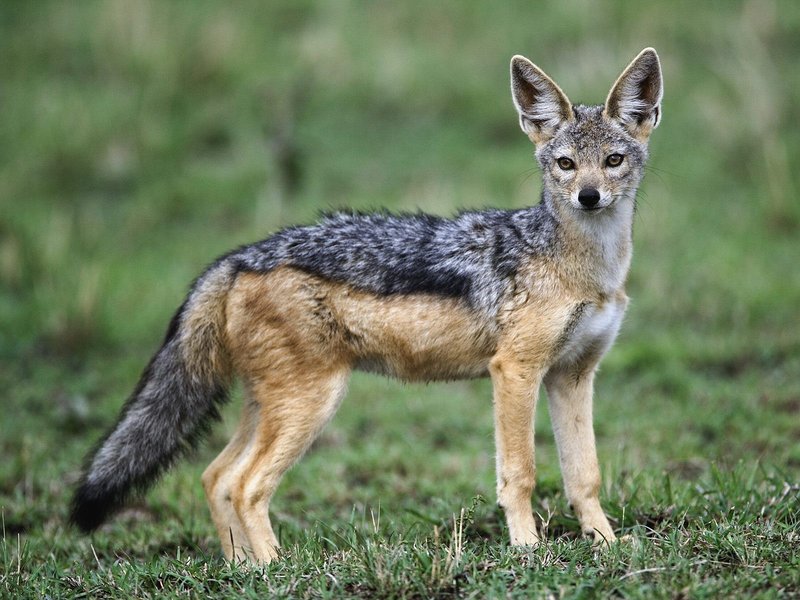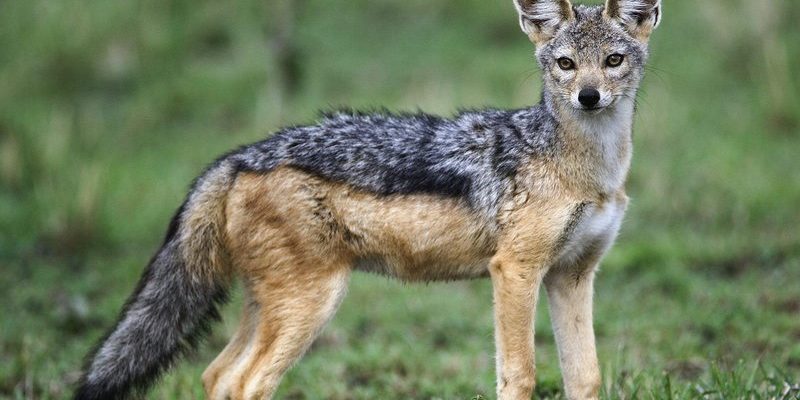
Across various cultures, this clever creature is often seen as a trickster, embodying that cleverness we all admire. But it’s not just about being sneaky; the black-backed jackal teaches us about survival, adaptability, and the complexities of life within its ecosystems. Let’s dive deep into how this remarkable animal has been depicted in culture and folklore, exploring its symbolic meanings and the impact it has had on stories throughout history.
The Origins of the Black-Backed Jackal in Folklore
Folklore often springs from a blend of observation and imagination. In many African cultures, the black-backed jackal is celebrated for its role in the natural world and is often regarded as a symbol of resourcefulness. These animals are typically found in various habitats across eastern and southern Africa, where they adapt to different environments, making them true survivors.
In traditional tales, the black-backed jackal frequently appears alongside other animals, creating a cast of characters that embody human traits. For example, some stories depict the jackal as a wise figure, offering advice to other animals. This portrayal often serves to teach life lessons, showcasing the jackal’s cleverness and adaptability.
The jackal’s cunning nature sometimes brings it into conflict with larger animals, like lions or hyenas, reflecting the struggles and dynamics of the natural world. These stories remind us that survival often requires a blend of intelligence, caution, and occasionally, a touch of trickery.
The Trickster Archetype
You might have heard about the trickster archetype in various cultures. It’s a character who uses wit and cleverness to outsmart others, often challenging the status quo. The black-backed jackal perfectly fits this role. In many African tales, it’s presented as a character that outsmarts larger predators, often using its cunning over brute strength to navigate challenges.
This cleverness is not just for entertainment; it serves a purpose. By showcasing the jackal’s ability to adapt, these stories highlight the importance of intelligence and critical thinking. It teaches us that sometimes, brains can win over brawn, a valuable lesson that resonates beyond the animal kingdom.
For instance, in some folktales, the jackal may trick a lion into thinking it’s been insulted, causing the lion to leave its territory. This cleverness reflects real-life strategies—how smaller animals can evade danger through smart tactics.
The black-backed jackal isn’t just limited to African folklore; its image travels across various cultures, each adding unique layers to its story. In ancient Egyptian mythology, for instance, the jackal is associated with Anubis, the god of the afterlife, who is often depicted with a jackal’s head. This connection highlights the jackal’s importance in handling transitions—from life to death—symbolizing protection and guidance in the spiritual journey.
Meanwhile, in some parts of southern Africa, the jackal plays a role in creation myths. Stories often depict the jackal as a character who either helps or hinders the creation of the world, indicating its dual nature. It reminds us that life is not always black and white; it encompasses a range of experiences and lessons.
Through these myths, cultures express their values and beliefs while also making sense of the natural world. They show that the black-backed jackal is not merely an animal but a reflection of human traits and struggles, embodying both positive and negative attributes.
Modern Representations in Media
Fast forward to today, and you’ll find the black-backed jackal making appearances in various forms of media, from literature to animation. This resurgence in representation illustrates how deeply ingrained this animal is in our collective consciousness. In children’s stories, for example, the jackal might be portrayed as a playful character, teaching lessons about friendship and cooperation, showcasing its lighter side.
In movies and documentaries, the black-backed jackal is often represented in its natural habitat, emphasizing its role in the ecosystem. These portrayals underline the importance of conservation and understanding of wildlife. By showcasing these animals in a relatable light, filmmakers are helping to create a connection between viewers and the natural world.
Furthermore, the black-backed jackal’s depiction in social media and online platforms has created a new wave of appreciation. Memes and illustrations often highlight its funny or clever traits, allowing a broader audience to engage with and appreciate this fascinating creature.
Lessons from the Black-Backed Jackal
What can we take away from the black-backed jackal? One major lesson is the power of adaptability. In both nature and life, being flexible and open to change can lead to success. Whether it’s finding food in a challenging drought or navigating the complexities of modern life, the black-backed jackal teaches us to be resourceful.
Moreover, its stories often remind us of the importance of wit and strategy. In a world that sometimes values strength over intelligence, the jackal’s tales encourage us to think outside the box and find clever solutions to our problems.
Additionally, observing how cultures portray the jackal helps us reflect on our own values. The qualities we attribute to the jackal can illustrate what societies cherish or fear, offering insights into broader human experiences.
The Future of the Black-Backed Jackal in Culture
As we move forward, the black-backed jackal will likely continue to be a character in cultural narratives. With the growing push for conservation and a deeper understanding of ecosystems, the representation of this species can evolve. Stories that focus on ecological balance and respect for nature can help foster a greater appreciation for wildlife.
Moreover, as digital media continues to grow, new avenues for storytelling will emerge. The black-backed jackal could be featured in video games, virtual reality experiences, or graphic novels, broadening its reach and impact on younger generations.
Ultimately, the cultural significance of the black-backed jackal is intertwined with environmental awareness. By learning about this animal’s role in folklore, we can better appreciate the importance of preserving its habitat and the ecosystem it represents.
In conclusion, the black-backed jackal serves as both a compelling character in folklore and a reflection of human values and experiences. Through its cleverness and adaptability, it teaches us valuable lessons about survival and the intricacies of life. As we continue to explore its stories, we deepen our connection with nature and the narratives that shape our understanding of the world around us.

